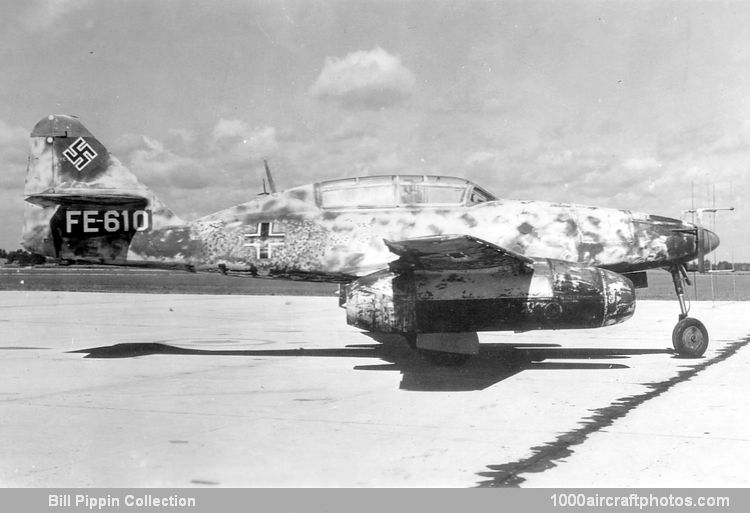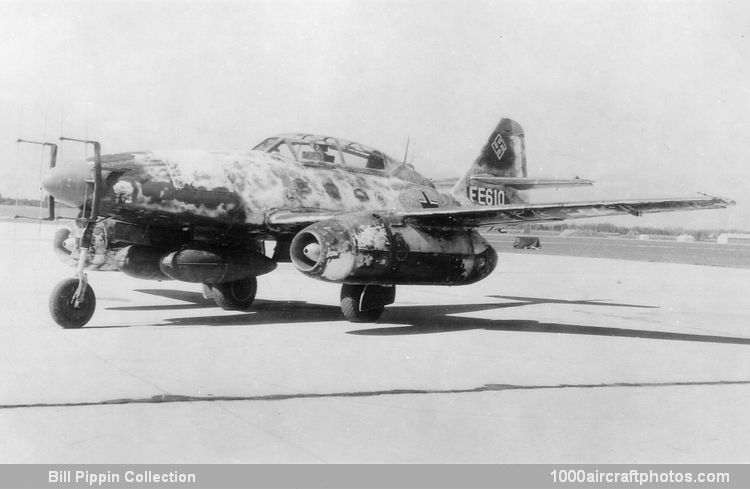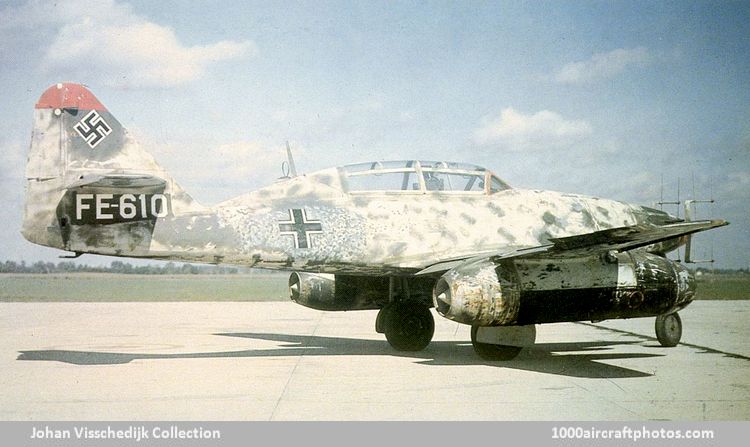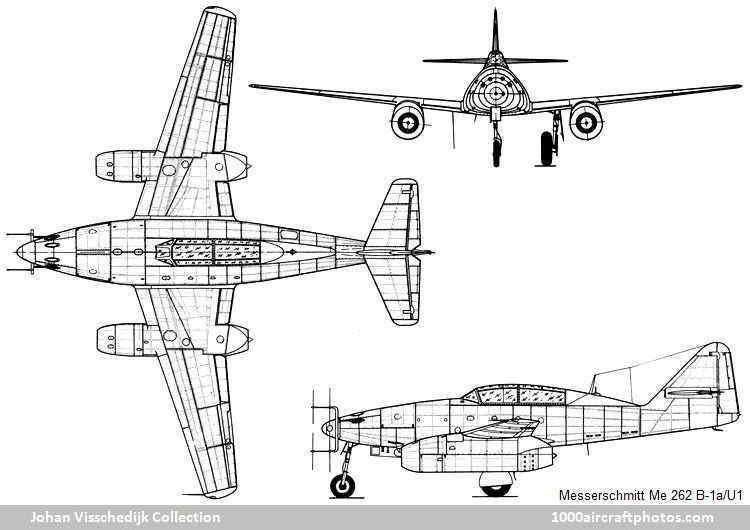10/31/2011. Remarks by Johan Visschedijk: "A training program for Me 262 pilots was initiated in November 1944, III/EJG 2 (III Gruppe/Ergänzungs-Jagdgeschwader 2) being formed at Lechfeld from the staff of Erprobungskommando 262, the unit engaged in the operational perfection of the fighter. To assist in the training program and to reduce the high accident rate which had resulted from the erroneous belief that the jet fighter called for no specialized training, a tandem two-seat model, the Me 262 B-1a, was produced.
The installation of a second cockpit was effected at the expense of internal fuel capacity, necessitating the attachment of pylons under the forward fuselage to carry two 79.25 gal (300 l) fuel tanks, and a number of the fifteen completed Me 262 B-1a trainers were delivered to III/EJG 2.
Proposals for night fighting versions of the Me 262 were first made in 1944, and a single-seat machine was experimentally fitted with an SN-2 Lichtenstein radar array in the nose. This led to the decision to adapt the Me 262 B-1a trainer as an interim night fighter, designated Me 262 B-1a/U1. An airborne interception and tail warning radar (FuG 218), a Naxos homing radar (FuG 350ZC), and a blind approach system (EBL-3) were installed, and the normal MK 108 cannon armament was retained.
Three Me 262 B-1a/U1 conversions were completed, although the drag of the radar array which reduced maximum speed by 37.3 mph (60 kmh) occasioned some concern. One of the aircraft, c/n 110306 (coded "Red 6"), used by 10/NJG 11 (10 Staffel/Nachtjagdgeschwader 11) in the defense of Berlin, was handed over to the Allied forces and was shipped to the USA under the Foreign Equipment number "FE-610".
After evaluation the aircraft was stripped of its radar equipment, recoded "T2-610", and used in several air displays. Declared surplus the aircraft was destined to be transferred to the Cornell University at Ithaca, New York, but there is no record the aircraft arrived there and was presumably scrapped."



